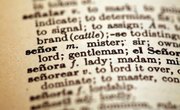The vowel sounds in the English alphabet are divided into two categories, long and short. Linguists sometimes refer to short and long vowels as “lax” and “tense”, respectively. Language curriculum geared towards young children who are learning to read or English as a Second Language students often emphasize long and short vowels. Understanding the difference between the two types of vowels and learning to identify them can help speakers to improve the accuracy of their pronunciation.
Step 1
Listen for the difference in pronunciation between long and short vowels when you say words aloud. For example, hear the difference between the “a” sound in the words acorn and hat. Examples of word pairs that demonstrate between other long and short vowels include leaf/egg, pine/picture, cone/sock and flute/truck.
Step 2
Keep in mind that the difference between long and short vowels does not lie in the length of time required to pronounce the sound. While this condition is sometimes true, the difference actually lies in the position of the tongue as you pronounce different sounds. When pronouncing long sounds, you typically place the middle of your tongue against the roof of your mouth. When producing short sounds, on the other hand, the middle of the tongue stays in a lower position.
Step 3
Remember that in transcriptions of English words, a single letter typically represents a short vowel sound. Two letters, meanwhile, tend to represent long vowel sounds. For example, the “o” sound in cow is transcribed as /aw/. In the word no, the “o” is transcribed as /o/.
Tip
Long vowels tend to sound their names.
Related Articles
References
- ABC Fast Phonics: The American English Pronunciation of Long e and Short i Vowel Sounds
- The Study of Language, Second Edition; George Yule; 1996
Tips
- Long vowels tend to sound their names.
Writer Bio
Aksana Nikolai is a graduate of the New York Institute of Technology with a bachelor's degree in language studies and international affairs. Nikolai is currently working in online marketing and communications. She has been writing since 2008, specializing in made-for-Web content and maintaining her fashion and beauty blog.










